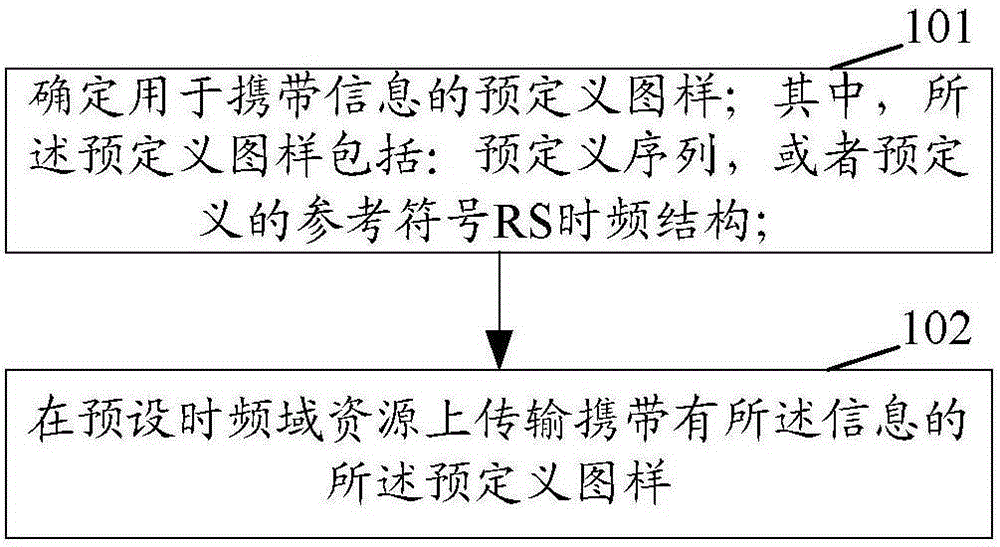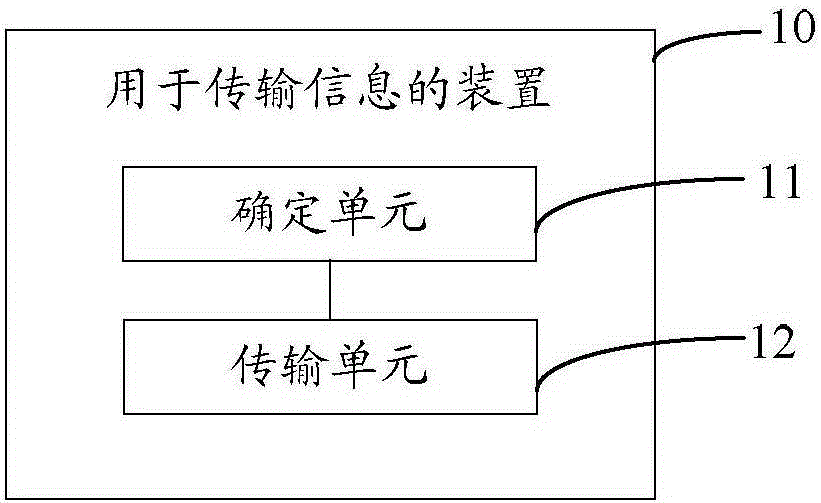Information transmission method and device
A technology for transmitting information and transmitting units, which is applied in the field of transmitting information
- Summary
- Abstract
- Description
- Claims
- Application Information
AI Technical Summary
Problems solved by technology
Method used
Image
Examples
Embodiment 1
[0153] image 3 The ACK / NACK transmission structure under the conventional cyclic prefix (Cyclic Prefix, CP) of the existing TTI=1ms PUCCH format Format 1 / 1a / 1b is given in . In the existing PUCCH structure, one subframe is occupied in the time domain, one physical resource block (Physical Resource Block, PRB) is occupied in the frequency domain, and frequency hopping is used between time slots. Different cells use group frequency hopping to select different base sequences based on QPSK, and the period of group frequency hopping is a time slot. In the figure, different symbols in the same time slot use the time domain randomization method to obtain different cyclic shift sequences of the same base sequence. In addition, the existing structure adopts the method of time-domain spread spectrum to increase the number of multiplexing users. However, when the short TTI technology is used to reduce the delay, the number of TTI symbols is only 1 to 7 single-carrier frequency-divisio...
Embodiment 2
[0163] Figure 5 A schematic diagram of sending a K bit ACK / NACK message fed back by the PUCCH with a TTI of 7 symbols is given in . Figure 5 , a total of N UEs send uplink ACK / NACK messages, and each UE feeds back K-bit ACK / NACK, using a K-1 ,a K-2 ,...,a 1 ,a 0 express. The base sequence adopts a QPSK machine-selected sequence with a length of 24, and assigns M=2 to each SC-FDMA symbol for each user K-1 different cyclic shifts, using Indicates that s represents the symbol index, and its value ranges from an integer within 0 to 7. The PUCCH frequency domain occupies 4 PRBs, and the ACK / NACK information on each symbol is mapped to the comb subcarrier in the frequency domain. The frequency domain offset of the comb subcarrier is offset, which is calculated by the following formula:
[0164]
[0165] in, means a K-1 of non. Further, define a K-2 ,...,a 1 ,a 0 The decimal number corresponding to the composed binary sequence is i. At the sth symbol position, th...
Embodiment 3
[0172] Figure 6 A schematic diagram of sending a K bitACK / NACK message fed back by the PUCCH with a TTI occupying 2 symbol lengths is given in . Figure 6 , a total of N UEs send uplink ACK / NACK messages, and each UE feeds back K-bit ACK / NACK, using a K-1 ,a K-2 ,...,a 1 ,a 0 express. The base sequence takes the length N ZC Cyclic extension of the ZC sequence of =36, assigning M=2 to each user K-1 different cyclic shifts, using Represents, where s represents the symbol index, which takes a value of 0 or 1. The ACK / NACK information of each user is mapped to different frequency domain positions of two SC-FDMA symbols, and the frequency domain indexes are n respectively r,s , that is, there is frequency hopping between symbols, and each frequency hopping position occupies 6 PRBs. Each symbol is mapped to a comb structure, and the frequency domain offset of the comb subcarrier is offset. When s=0, offset=a K-1 ; when s=1,
[0173] Further, define a K-2 ,...,a 1 ,...
PUM
 Login to View More
Login to View More Abstract
Description
Claims
Application Information
 Login to View More
Login to View More - R&D
- Intellectual Property
- Life Sciences
- Materials
- Tech Scout
- Unparalleled Data Quality
- Higher Quality Content
- 60% Fewer Hallucinations
Browse by: Latest US Patents, China's latest patents, Technical Efficacy Thesaurus, Application Domain, Technology Topic, Popular Technical Reports.
© 2025 PatSnap. All rights reserved.Legal|Privacy policy|Modern Slavery Act Transparency Statement|Sitemap|About US| Contact US: help@patsnap.com



